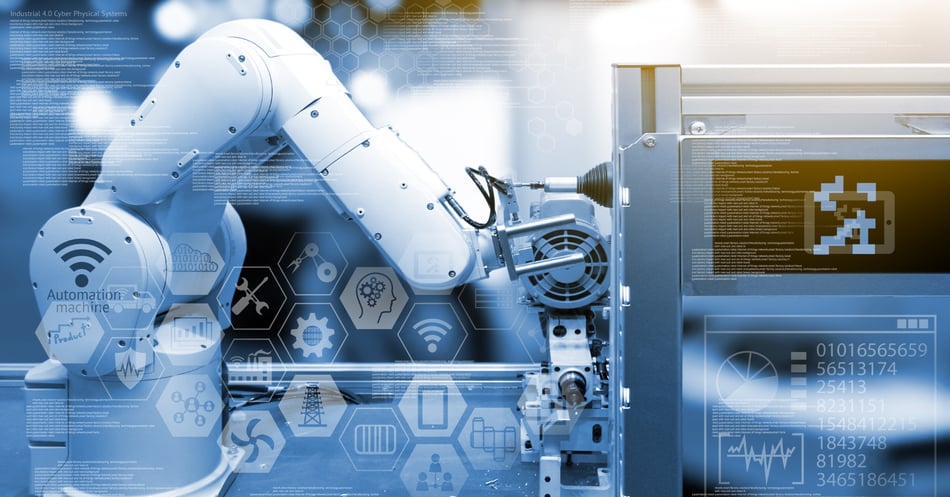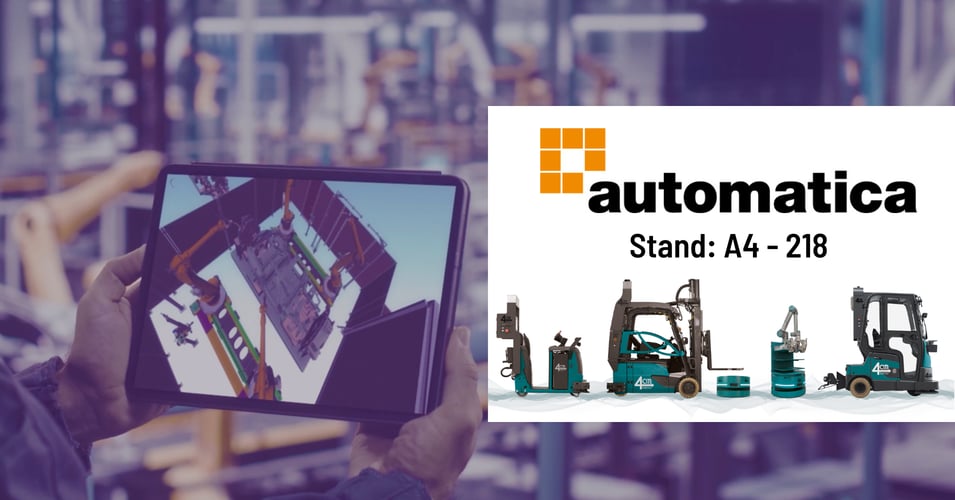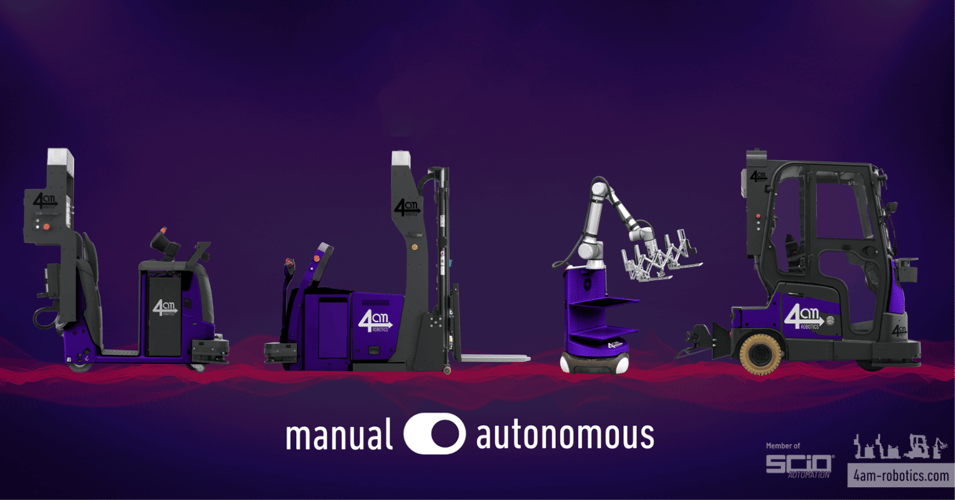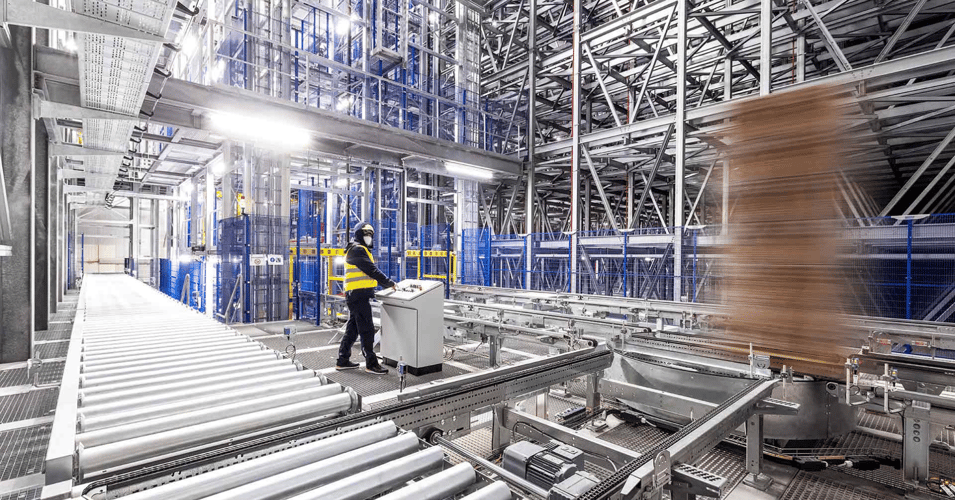
Factory automation has been really high on the agenda for so many companies recently due to increased pressure from competitors, fluctuations in demand, and the need to consistently improve profitability. That being said, what actually are the challenges that need to be overcome for businesses to seamlessly transition to Industry 4.0, and what trends are emerging given that automation has been experiencing an enormous surge?
Challenges in the implementation of Industry 4.0
Firms in the manufacturing industry are acutely aware of the need to automate and digitalize their processes - especially if they want to remain competitive moving forward. However, making this change means that tried and tested procedures and processes have to be looked at, more often than not, they are fully updated and modernized across the board. Most businesses have a clear vision of how they want automated and digital production to look, but there’s also a lack of clarity as to how it can be properly implemented. Attempts are frequently made to force through the change by using several cookie-cutter solutions, as well as automating individual machines and processes. Unfortunately, this approach won’t be successful in the long run, ultimately leading to frustration and bringing everyone’s efforts to properly automate to a grinding halt. Every solution needs to be linked together for smart production to come to fruition.
SCIO Automation CEO, Michael Goepfarth, illustrates this wonderfully well by comparing it to a ballet performance:
“There are 10 or more dancers, and each of them performs beautifully. However, when it comes to a dance group, you’re looking at the overall performance, and not necessarily at everyone’s individual interpretation. At the end of the day, the only thing that matters is whether the dancers work well as a team to perform as best as they can. You can look at a large number of robots in a similar way. Using each robot individually works well, but if you want to get the best out of the group overall, you have to incorporate them into a system.”
In addition to having to seamlessly integrate all components in their production environment into a common system, companies have various other difficulties to deal with such as:
• Implementing sufficient data acquisition capabilities to carry out automation processes
• The increased demands on IT system security
• A sharper focus on sustainable production
• Improving flexibility and quality within the production process in spite of constant price pressure
• Employees may not accept the change, and continue working in the way they did previously
The future of industrial automation
Phasing out manual activities, boosting productivity and efficiency - innovative automation solutions are already demonstrating what’s possible in the industrial production sector despite the major hurdles that have been faced along the way. In light of this, various trends are becoming increasingly apparent when it comes to businesses implementing automation solutions.
Trend 1:
Production and logistics are networking into a single unit.
All components in the production and logistics environment need to be integrated into a common digital and higher-level system for businesses to successfully transition to the Smart Factory concept. This requires a change from just integrating hardware to using software to fully network digital processing environments. This is why the main focus of the Smart Factory is on developing secure software products that can be individually customized to enable them to create as much transparency, efficiency and output as possible. This also ensures seamless interaction between components that are optimizing and controlling production processes. The rigid production value chain is being fundamentally transformed into a dynamic network that’s fit for the future.
Trend 2:
Automation technologies have long since entered the mainstream, and they are no longer seen as niche products that are only used by major global corporations and innovation leaders.
If the pandemic has taught businesses anything, it’s that they need to integrate their automation processes to give them the space to hold their own on the market. Automation, connectivity and digitalization are key factors in enabling companies to continue to meet client needs, keep costs low and drive future growth. Autonomous mobile robot solutions and other industry-specific automation product solutions, such as automatic gripping systems, are creating entirely new opportunities for companies in this regard. They not only ensure flexibility and cost efficiency, but they also make a significant contribution to safeguarding quality and consistency across the entire supply chain.
Trend 3:
Automation is opening doors for sustainable production.
Taking sustainable action is more important than ever against the backdrop of ever-dwindling resources, and the seemingly endless fight for energy and raw materials exacerbated by various global crises. All of these developments have shifted sector attention towards building modern industrial automation systems that use resources efficiently and keep running costs to an absolute minimum. That being said, the real game changer in terms of reducing our carbon footprint will be in using smart factories to keep production local, and ensuring that it’s always fully automated.
“Looking at industry developments, we’ve been building a global production system over the last 25 years. A product is produced somewhere and then it shipped to the rest of the world in ever greater quantities. Despite this, the pandemic and the climate debate have made us all realize that we can’t keep doing things the way we always have.” [Michael Goepfarth, CEO of SCIO Automation GmbH]
Trend 4:
The Smart Factory gives companies more scope to customize their production systems.
Goepfarth added: “More and more consumers want to customize their products to meet their exact needs, down to the finest detail. This kind of demand is moving the industry away from standardized mass production, and more towards automated all-in-one flow systems.”
Customized products are growing in significance by the day when it comes to keeping a business competitive - but there’s a downside in that they require a greater amount of flexibility, and can make production systems unnecessarily complex. Here’s where the Smart Factory comes in: autonomous systems and the ability to network the entire production environment provides max. flexibility and agility, while being cost-effective and saving on resources, thereby allowing the production chain to be fully customizable.
It goes without saying that developing automation in the manufacturing industries is going to be ever more crucial as time goes on to allow businesses to shield themselves from the adverse impact of current global challenges, but this won’t just happen overnight. Producers need to look for a solid and reliable partner to provide them with appropriate support in implementing automated production systems. If not, it’s highly likely that this level of complex change will a have huge detrimental effect.
SCIO has made it its mission to support companies on their journey towards the Smart Factory. As an innovator and integrator, our focus is on full logistics and production processes as we want to be a one-stop shop for our clients, offering comprehensive automation solutions. Whether it’s warehouse automation and material flow systems, automated manufacturing plants and assembly lines, or software programming - we have the cutting-edge skills to develop customized solutions that can be seamlessly integrated based on our clients’ production landscape and business needs.
Read more about our future-proof solutions here.
Find out more about the Smart Factory and the potential it offers in an interview with Michael Goepfarth, CEO of SCIO Automation GmbH.

















